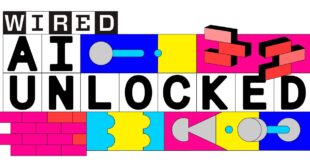Artificial intelligence might now be solving advanced math, performing complex reasoning, and even using personal computers, but today’s algorithms could still learn a thing or two from microscopic worms.
Liquid AI, a startup spun out of MIT, will today reveal several new AI models based on a novel type of “liquid” neural network that has the potential to be more efficient, less power-hungry, and more transparent than the ones that underpin everything from chatbots to image generators to facial recognition systems.
Liquid AI’s new models include one for detecting fraud in financial transactions, another for controlling self-driving cars, and a third for analyzing genetic data. The company touted the new models, which it is licensing to outside companies, at an event held at MIT today. The company has received funding from investors that include Samsung and Shopify, both of which are also testing its technology.
“We are scaling up,” says Ramin Hasani, cofounder and CEO of Liquid AI, who co-invented liquid networks as a graduate student at MIT. Hasani’s research drew inspiration from the C. elegans, a millimeter-long worm typically found in soil or rotting vegetation. The worm is one of the few creatures to have had its nervous system mapped in its entirety, and it is capable of remarkably complex behavior despite having just a few hundred neurons. “It was once just a science project, but this technology is fully commercialized and fully ready to bring value for enterprises,” Hasani says.
Inside a regular neural network, the properties of each simulated neuron are defined by a static value or “weight” that affects its firing. Within a liquid neural network, the behavior of each neuron is governed by an equation that predicts its behavior over time, and the network solves a cascade of linked equations as the network functions. The design makes the network more efficient and more flexible, allowing it to learn even after training, unlike a conventional neural network. Liquid neural networks are also open to inspection in a way that existing models are not, because their behavior can essentially be rewound to see how it produced an output.
In 2020, the researchers showed that such a network with only 19 neurons and 253 synapses, which is remarkably small by modern standards, could control a simulated self-driving car. While a regular neural network can analyze visual data only at static intervals, the liquid network captures the way visual information changes over time very efficiently. In 2022, Liquid AI’s founders figured out a shortcut that made the mathematical labor needed for liquid neural networks feasible for practical use.
Source link
 meganwoolsey Home
meganwoolsey Home



